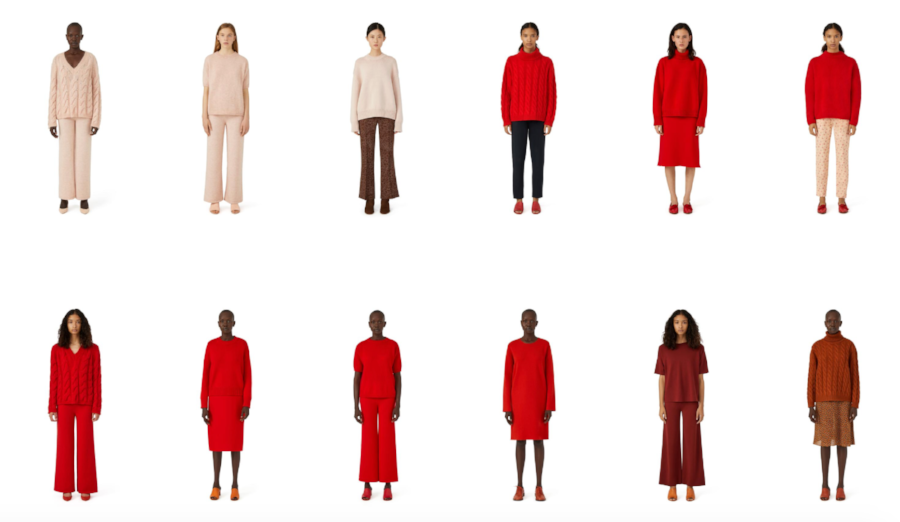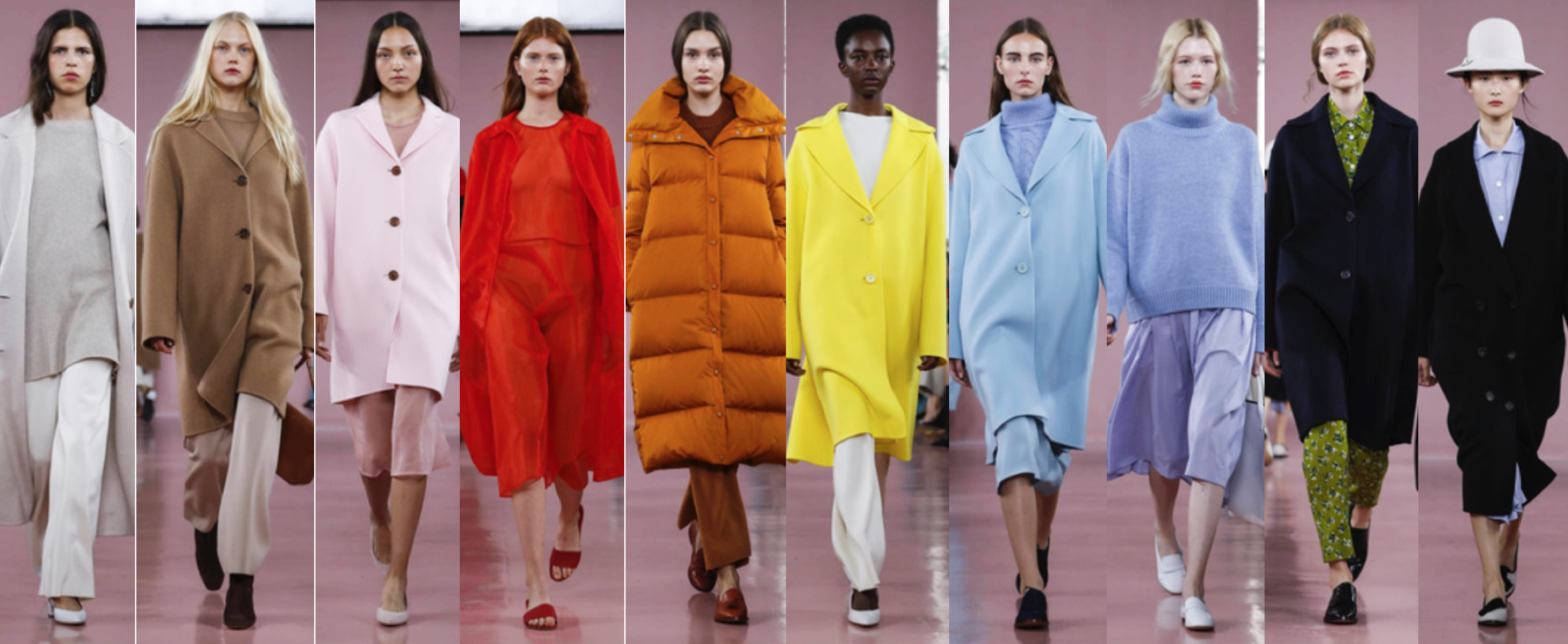
image: Mansur Gavriel
In light of the exodus of big name brands from New York to Paris ahead of the Spring/Summer 2018 shows in New York, the much-talked-about “runway revolution” of See Now-Buy Now seems to have fallen by the wayside. However, the model, which opts to more neatly align seasonal runway shows with the actual season in effect, is alive and well, if nowhere else than at Mansur Gavriel’s womenswear debut.
The New York-based brand, which was founded by Rachel Mansur and Floriana Gavriel, made its name exclusively based on minimalist handbags – and then shoes – until this season, that is. The design duo is branching out – into outerwear and knitwear. As noted by Racked, this consists of “sweaters, dresses, and pants in cashmere, wool, wool cashmere, and camel hair. Prices start at $295 for a short-sleeve mohair crewneck and run up to $1,490 for a wool cashmere long coat (the rest of the coats range from $895 to $1,095).”
And those garments are available to shop right now. So, while everyone else is showing garments for the Spring/Summer 2018 season, Mansur Gavriel opted to show ones that are meant to be worn during Fall/Winter 2017. Showing in this way makes sense. As Bloomberg noted last year, the See Now-Buy Now model is “so painfully obvious” even Kanye West thinks it makes sense. “I just thought of the craziest idea of all,” the fashion entrepreneur tweeted in 2015. “I’m going to sell winter coats in the winter!!!”

In addition to the seemingly sensical notion of enabling consumers to shop in accordance with the season that it is, runway shows have changed so much in terms of their purpose over the years that this new model makes sense for yet another reason. Once upon a time, about the only people who attended fashion shows were apparel buyers for high-end department stores, who were on hand to plan what would be available for shoppers in the coming season. This is why Spring/Summer clothing is presented in the fall, and Fall/Winter clothing in the spring.
Nowadays, fashion shows are less about buying and much more about social media spectacles. As a result, consumers can easily view every runway look on Instagram or Snapchat or by way of any array of livestreams, which makes waiting six months for such items to become stoppable about antiquated as, perhaps, going to a department store. It also makes the cost of staging a runway show seemingly less worthwhile if the press that can be derived from it does not help parlay into actual sales – right on the heels of the runway show.
But while See Now-Buy Now seems like the most obvious thing in the world, it comes with some significant drawbacks for brands and retailers, which will have to take major steps to accommodate such a change. Production processes, timelines, and funding structures will have to be altered, as will the process and timeline for buying.
Retail buyers will have to take in the collection long before the runway show in order to enable retailers to stock the garments and accessories as soon as the runway show is over. These are just some of the changes.
Tom Ford, for instance, one of the early proponents of the notion of See Now-Buy Now, showed its Spring/Summer 2018 collection on evening. In theory, if the brand were to make its collection available for purchase just after the show (which it did not – as the push for See Now-Buy Now has seemingly gone the way of most of last year’s trends), it would have had to start planning even earlier than usual to ensure that the garments and accessories were ready to be shown to buyers so they could see (and order) the collection far enough in advance that it could be manufactured, shipped and merchandised in time for the brand’s runway show this week.
That is no small feat.
While it seems as though Mansur Gavriel might be one of the first to get a handle on the tactic, something is currently awry on the brand’s e-commerce site. It appears as though every single item of clothing the brand showed on its runway on Sunday afternoon was sold out by Sunday evening, which is either: 1) A temporary glitch; 2) the result of the brand making extremely, extremely small quantities of the garments; or 3) a marketing ploy meant to drive (read: inflate) desirability. Each of these options seems relatively plausible.







